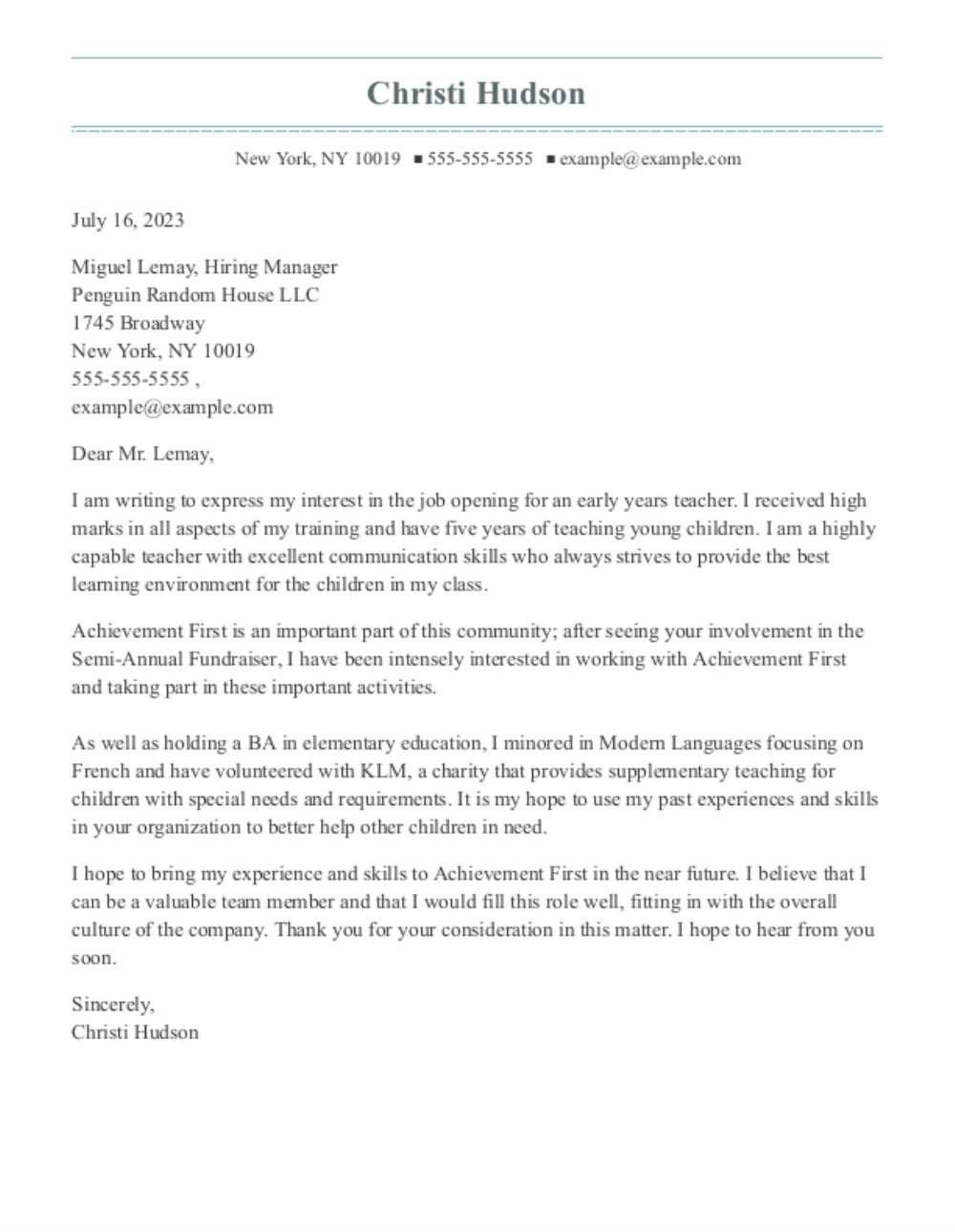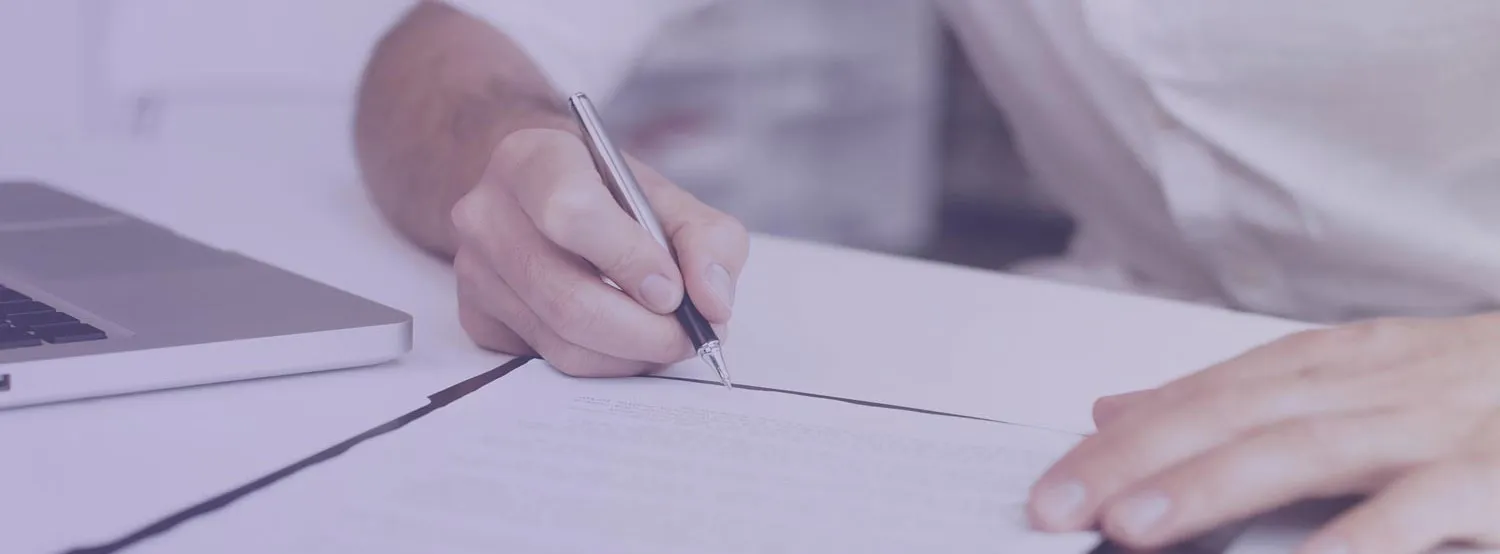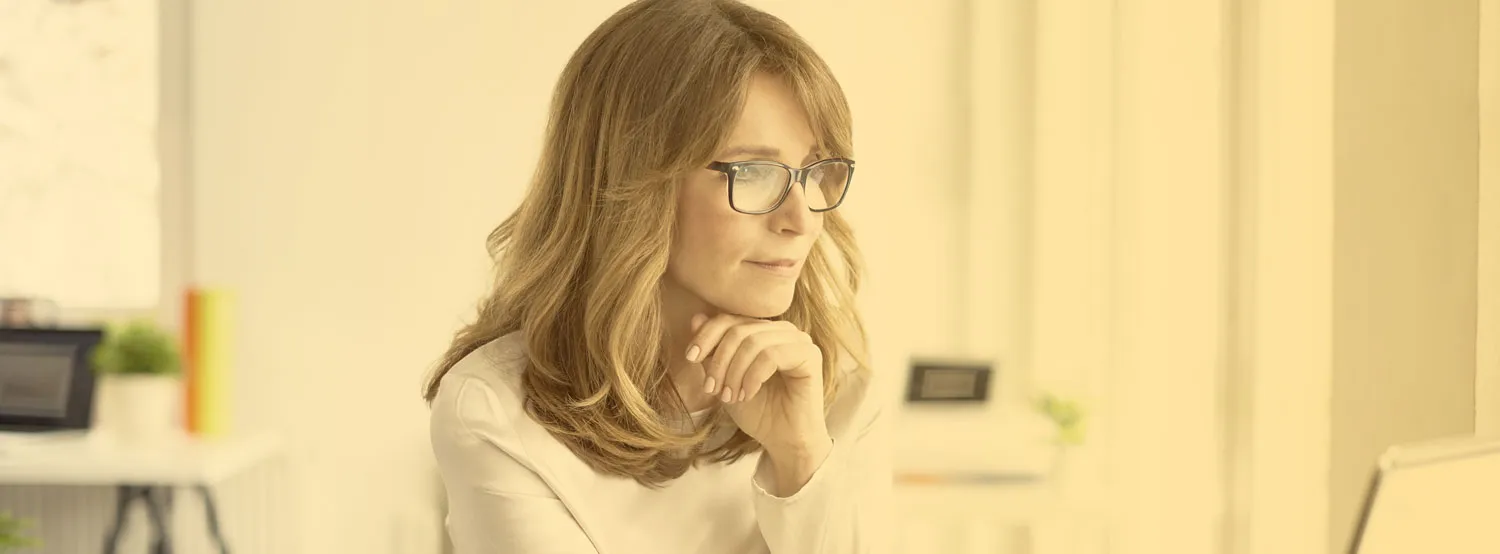What Is a Cover Letter? | Tips and Examples
What’s a cover letter and how can it help you land a dream job? Our tips and examples will help you write a polished, compelling cover letter.
Our customers have been hired by*:*Foot Note

Cover Letter Example
What is a cover letter?
A cover letter is a document that you send alongside your resume that has additional information about your professional background and skills.
If we had to summarize what is a cover letter for a job, we’d say that a cover letter:
- Is a professional letter that accompanies your resume as part of a job application.
- Convinces hiring managers or recruiters that you are the best candidate for a job.
- Gives more details on achievements and skills mentioned in your resume, and provides employers with more details about your personality.
Whether you need a powerful cover letter to apply for your first job or a new job, this page will give you tips on what to include in a cover letter, how to improve your cover letter and the tools you need to build a solid cover letter that grabs employer’s attention.
Build my cover letterCover letter example
What should be included in a cover letter?
When writing your cover letter, there are a few elements that should always be present. Whether you follow highly specific cover letter examples or a generic cover letter sample, a well-written cover letter should include the following:
1. Formal header and salutation
Every cover letter should have a header. Your header should contain your full name and contact information like your phone number and email address. You can also include elements like your LinkedIn profile or the details of other professional social media accounts.
Your salutation should include the hiring manager’s last name (e.g. “Dear Mr. Smith”), instead of something generic like “Dear Hiring Manager,” “To Whom It May Concern,” or “Dear Sir.”
2. Introduction and hook
Your introduction should give a glimpse of your personality as well as your skills and experience. It should also explain why you are generally interested in working for that company.
Here are two good examples of opening first paragraphs that may grab a hiring manager’s attention:
“I was excited to see the editorial assistant role advertised online. As an individual with three years of editorial experience and an enduring passion for journalism, I would be a valuable and motivated member of the team and would appreciate your consideration for this position.”
“I am writing to express my interest in the job opening for an early years teacher. I received high marks in all aspects of my training and have five years of teaching young children. I am a highly capable teacher with excellent communication skills who always strives to provide the best learning environment for the children in my class.”
3. Body paragraphs
The third paragraph should discuss what makes you capable of filling the role. This can include your relevant experience, certifications and hobbies if they are relevant. More importantly, you should also give hiring managers a reason to choose you over one of the other applicants.
For example, someone applying to work for a local elementary school might write:
“XYZ is an important part of this community; after seeing your involvement in [local event], I have been intensely interested in working with XYZ and taking part in these important activities.
As well as holding a BA in elementary education, I minored in Modern Languages focusing on French and have volunteered with KLM, a charity that provides supplementary teaching for children with special needs and requirements. It is my hope to use my past experiences and skills in your organization to better help other children in need.”
4. Call to action and sign-off
Your last paragraph should be a closing statement that ties together the points you have made in your cover letter. This closing paragraph should also act as a call to action, prompting the hiring manager to keep you in mind and invite you for a job interview.
An example of an effective closing paragraph could be:
“I hope to bring my experience and skills to [ABC] in the near future. I believe that I can be a valuable team member and that I would fill this role well, fitting in with the overall culture of the company. Thank you for your consideration in this matter. I hope to hear from you soon.”
Once you have written your final paragraph, you should sign off formally with something like “Yours Sincerely” or “Regards”.
For a more detailed explanation of how to effectively market yourself in a cover letter, check our How to Write a Cover Letter article.
Build my cover letterTypes of cover letters
Cover letter for job
Reference letter
Letter of interest
Letter of intent
Internship cover letter
Motivation letter
Five key tips for a strong cover letter for a job
Our ResumeHelp experts gathered these five keys for job seekers of all levels to utilize when writing a professional cover letter:
- Research the position and company. Show the recruiter and hiring manager that you understand the company’s mission, goals, products and clientele. They can tell when someone did their homework during their job search.
- Tailor your letter to the job’s needs. Consider the job requirements in the job description and communicate clearly that you are the right person for this specific job. Read the listing carefully, compare the required skills to your own skill set and highlight the relevant skills and experiences that match the job listing. For example, if you’re a graphic designer and the job ad says that they’re looking for someone with experience in designing POP advertising campaigns, your graphic design cover letter should give examples of successful POP campaigns you have worked on.
- Expand on your resume, don’t just regurgitate it. A cover letter is an extension of your resume, so avoid repeating the same information. Choose key transferable skills highlighted in your resume to talk more in-depth about them in your cover letter or mention something completely new.
- Display your enthusiasm and personality. It’s important that your cover letter portrays a genuine enthusiasm and interest in the job position, as well as the company. Don’t be bland, show them that you’ll be a good fit!
- Use professional examples and templates. Consider using example cover letters that are relevant to your industry. You can also make use of our cover letter templates to create a strong and effective cover letter base that you can further customize when you need to.
More cover letter tips and resources
ResumeHelp has dozens of other resources to help you write a great cover letter. Here are just a few that can help you make a good cover letter a great cover letter!
- Cover Letter Basics: Learn all the tips and tricks from our experts to create a good cover letter.
- Cover Letter Builder: Let us do the heavy lifting by helping you write a cover letter in minutes.
- Cover Letter Formats: Read and follow our cover letter formatting guide to make sure your professional letter looks the part.
- Cover Letter Examples: Find inspiration in our library with hundreds of cover letter samples for different jobs and industries.
- Cover Letter Templates: Select from dozens of ATS-friendly templates.
FAQ: What is a cover letter?
What is a cover letter for a job?
A cover letter for a job is an important part of your job application for any position that you apply to. It expands on the information that you present on your resume but in a direct communication addressed to the hiring manager, recruiter or prospective employer.
The cover letter should explain why you believe you’re the perfect candidate, why you want to work for the company and how that company will benefit from your expertise.
How do I write a good cover letter?
The best way to write a good cover letter is to write your professional resume first. Then, look at your resume objectively and see what areas you can expand upon.
A good example would be a particular work achievement (i.e., “helped increase product sales per month by 20%”). Use your cover letter to explain what you did to increase product sales.
Since a cover letter should be relatively short (around one page), focus on your most impressive highlights and relevant soft skills and hard skills. Adding fluff content will be a red flag to anyone reading your cover letter.
Do I really need a cover letter?
Yes, we always recommend including a cover letter in your job application because a resume alone might not be sufficient to interest most hiring managers.
Cover letters are a great way to introduce yourself to potential employers and convince them that you’re worth getting interviewed. It gives you the space to provide additional information about achievements, key skills and why you’re the best candidate for this job opportunity. It also shows that you made the extra effort to land your dream job.
How long should my cover letter be?
When you send a cover letter and resume to a potential employer it is important to be concise. Your cover letter should be one page long and typically between three to five paragraphs. Recruiters spend less than a minute reviewing job applications, so keep it short and straight to the point, otherwise, you might risk overwhelming them with too much information.
Couldn't find the answer you're looking for?






